Better Call Saul successfully enriched the Breaking Bad universe through strategically placed allusions. It bolstered the tales of well-known characters. Through its standalone plot, it demonstrated its special narrative value to viewers and simultaneously delivered them entertaining moments through references to Breaking Bad episodes.
Better Call Saul was created to elaborate on Saul Goodman's story while developing Mike Ehrmantraut and Gus Fring's stories through references, which transformed simple Breaking Bad events into complete narratives. Better Call Saul included at least ten unique allusions that gave viewers new insights into the Breaking Bad plot.
Please note: This article is based on the writer's opinion. Reader discretion is advised.
The list of 10 major Breaking Bad references in Better Call Saul that fans probably missed
10. Cinnabon in Omaha
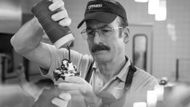
During the first episode of Better Call Saul titled Uno, viewers found that Saul Goodman was now living as Gene Takavic while managing a Cinnabon in Omaha. In the Breaking Bad episode Granite State, Saul predicts his destiny through an explicit line that reads:
"If I'm lucky, best-case scenario, I'm managing a Cinnabon in Omaha."
Black and white cinematography in this scene reveals how far Saul Goodman has moved from his extravagant legal career to his current daily routine. The shocking additional detail transformed an ordinary Breaking Bad dialogue into its central focal point for the show's fans.
The opening scene set the mood for Better Call Saul by indicating the show would reveal Saul Goodman's origins and the events happening after Breaking Bad.
9. University of American Samoa Degree
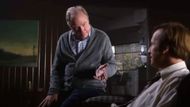
In Pimento, Chuck McGill confronts Jimmy about his law degree, exclaiming,
"University of American Samoa, for Christ's sake? An online course? What a joke!"
During his office appearance in Breaking Bad, Saul Goodman displayed his degree, which earlier fans treated as a humorous accessory, but Better Call Saul establishes its significance. The series suggests that Saul was a man of integrity because it follows Jimmy's true commitment to studying law throughout his quest toward becoming an attorney.
This revelation surprised fans by providing a heartfelt backstory to a previously comedic element. Thus, it highlights the show's commitment to character development and enriching the Breaking Bad universe.
8. Loyola's Family Restaurant
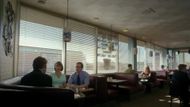
Loyola's family restaurant appears in both Breaking Bad and Better Call Saul. The Kettlemans encounter Jimmy at Loyola's bar during the two episodes of Better Call Saul, known as Uno and Bingo. Fans of Breaking Bad were pleasantly surprised by the familiar setting, which made them more conscious of the connected worlds of both the television series.
The repeated use of this space creates a sense of realistic connection with the general world, making the overall experience more authentic. The landmarks within the shows serve both as a hidden reference for viewers who notice them and as a method to create a deeper emotional connection between the audience and the plot.
7. Jesse Pinkman Graffiti
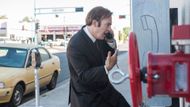
During the Nacho episode in Better Call Saul, viewers saw Jimmy McGill dial Nacho Varga through a payphone that featured extensive graffiti. The marking "JP," which is prominent among graffiti tags, is seen on a number of them. The "JP" tag's appearance in this scene is significant since the same markings reappear at Jesse Pinkman's house in the Problem Dog episode of Breaking Bad.
The fans of Breaking Bad observed this link in Better Call Saul between the graffiti on the payphone and Jesse Pinkman's early arrival in Albuquerque. The cameo that hinted at Jesse's pre-series Breaking Bad events delighted viewers by displaying the continuity between the two shows.
6. Francesca's Phone Call
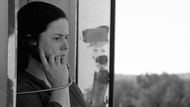
On November 12th at 3:00 PM, Saul Goodman gives his secretary, Francesca, orders to wait at a specified phone booth. In Quite a Ride of Better Call Saul, the scene appeared insignificant. The phone setup established in Breaking Bad leads to its payoff when Saul phones Francesca exactly when she is present at the particular location.
During this particular chat, Francesca provides updates over the phone regarding Jesse Pinkman and Skyler White, two Breaking Bad characters. The creators pleasantly shocked Breaking Bad enthusiasts through their careful planning, showing how plot threads from Breaking Bad were skillfully resolved in this prolonged story setup.
5. Gus's Superlab Construction
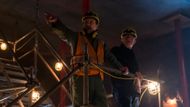
In the Point and Shoot episode of Better Call Saul, Gus Fring confronts Lalo Salamanca inside the incomplete superlab structure. Gus Fring concludes their confrontation by killing Lalo Salamanca. After Lalo Salamanca's demise, Mike Ehrmantraut and his crew perform the burial task by placing his remains under the superlab foundation together with Howard Hamlin's body.
In Fun and Games of Better Call Saul, the construction of the superlab resumes. The revelation shocked Breaking Bad fans because the location now had a sinister significance as Walter White and Jesse Pinkman would later embark on their meth-cooking operations. The double-body interment below the laboratory increases the setting's meaning by uniting the two shows' story arcs.
4. Ice Station Zebra Associates
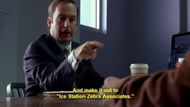
Better Call Saul includes the title "Ice Station Zebra Associates" among its references to Breaking Bad. During the Bali Ha’i episode, Jimmy and Kim carried out a fraudulent plan to persuade a businessman to issue $10,000 cheques to their nonexistent business firm, Ice Station Zebra Associates. Within Saul Goodman's law office, spectators of Breaking Bad recognize the return of the Ice Station Zebra Associates name during his illicit operations.
Finding out about the origin of the strange business name "Ice Station Zebra Associates" revealed a profound connection between Jimmy and Kim when viewers found out that it stems from a favorite movie of Kim's father. Breaking Bad fans received a surprising revelation as the silly Ice Station Zebra Associates name depicted the meaningful and emotional bond between Saul and Kim from his past.
3. Tuco Salamanca's Imprisonment
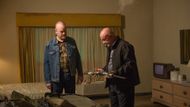
An intelligent Breaking Bad homage from Better Call Saul occurred during episode Gloves Off. The episode shows Mike Ehrmantraut creating an opportunity for Tuco Salamanca to face criminal arrest. Mike deliberately angers Tuco until the witness in the crowd sees Tuco striking him.
The police apprehends Tuco following an offense with a deadly weapon during the altercation. The character Tuco in Breaking Bad possesses a notorious nature, yet appears in prison during the premiere of the series.
Viewers were taken aback when they saw his presence in that room because the show had previously failed to provide his fate. This brief introduction revealed how Mike Ehrmantraut had controlled the Salamanca crime family since Tuco's prison admission.
2. Ken Wins
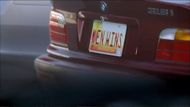
One of Better Call Saul's most humorous Breaking Bad references appears when Ken makes his second appearance with his "KEN WINS" license plate. Walter White used the destruction of Ken's luxurious car during Breaking Bad as an angry expression.
Ken makes his second appearance in the Better Call Saul episode Switch. Jimmy and Kim decide to carry out a non-threatening con against him in their latest scheme. The strategy involved allowing Ken to flaunt his achievements before leading him into a purchase of expensive beverages.
Viewers across the board were delighted to witness Ken in person. Despite his small role in the tale, he has a significant impact due to his outgoing nature. His reappearance in both shows uses comedy to bridge the different storylines while demonstrating that every character plays a role within Walter White's plus Saul Goodman's narrative.
1. Saul's 'LWYRUP' License Plate
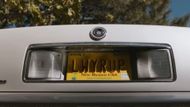
In the episode Marco, Jimmy McGill, recounts a tale where he once convinced a woman that he was actor Kevin Costner. In Breaking Bad's Abiquiú episode, Saul Goodman reveals to Walter White that he told a woman he was Kevin Costner, which turned out successfully because he wholeheartedly believed it.
Viewers of Better Call Saul may see this story unfold, making the prior funny statement more tangible. Breaking Bad fans were delighted when the show presented an expanded version of a humorous Saul Goodman story that initially seemed insignificant, yet enhanced his character development while demonstrating how the writers carefully brought together both series.
The final episode of Better Call Saul elevated all key elements from Breaking Bad by combining intentional storytelling methods with meticulous pre-planning. A few ignored elements, including brief dialogue or unexpected office furnishing, evolved into meaningful parts that contained deep, remarkable emotions. The carefully designed connections between the shows allowed viewers to see old topics in entirely new ways.
The producers delivered Saul Goodman's origin tale while creating a perfect transition between his story and Walter White's journey from start to finish. Better Call Saul's producers demonstrated through their method that each casual allusion has substantial worth, solidifying the show's status as an essential Breaking Bad companion.
